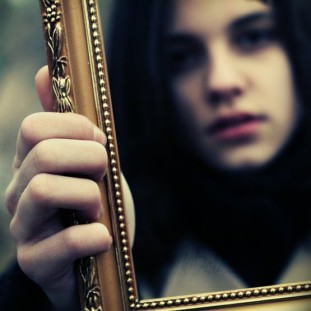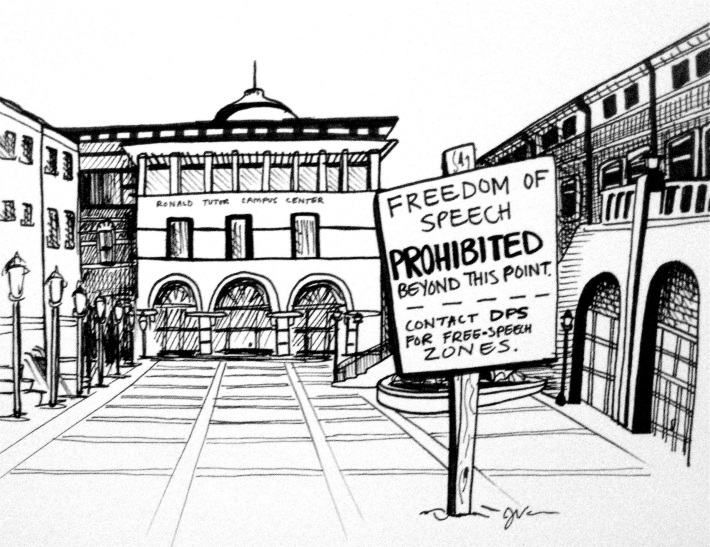The changing faces of Indian racism: how do we tackle it?
Writer: Meera Vijayann
In a compelling, heartfelt piece in First Post, one of India’s most widely read online portals, North-Eastern writer Makepeace Sitlhou made a point about the Indian media’s response to Nido Taniam’s death. Nido Tainam, a youth from the North-Eastern state of Arunachal Pradesh was the son of Nido Pavitra, a Congress politician. “The personal becomes political all too soon for a person of a minority community,” she wrote, “especially one who comes from a socio-politically disadvantaged and marginalized community that is routinely subjected to ridicule, stereotyping, suspicion and various forms of violence.” Sitlhou goes on to passionately describe why racism, particularly against people from the North East, continues to be viewed very differently in India. Nido’s death, she suggested, above everything, could be a case of “harmless stereotypes gone bad”.
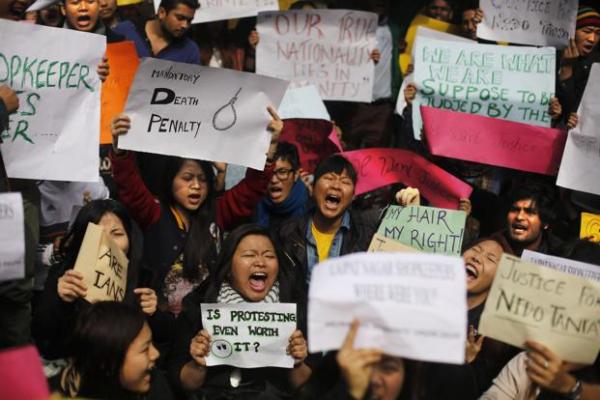
Students from the northeastern states protest the death of 20-year-old Nido Taniam, demanding justice against racial discrimination on Delhi. Photo: Mint
But, there is a point that most writers seem to miss about the spate of racist and ethnic attacks on minorities in India – most of these attacks stem from common stereotypes and racial profiles that Indians have learned and observed over the years. Read more…
Sexual harassment in India: Should we have blind faith in the law?
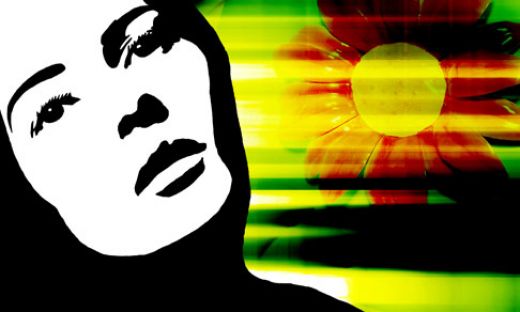
Sexual harassment against women in the workplace. Photo: http://www.indiafirstedition.com
“I left my job because my boss was harassing me,” a friend of mine once told me, “I couldn’t take it. There wasn’t anything I could do.” When I first moved to the city, stories like this shocked me. It was only years after that I learnt the simple rules that women followed in leading corporate offices: ignore it in any way you can, and if you cannot, leave. Read more…
How can digital movements lead to social impact?
Noa Gafni (World Economic Forum), Yangbo Du (MediaWire) Meera Vijayann (Ashoka India) Graziela Tanaka (Change.org) discuss with Carolina De Andrade (Plus Social Good) about the importance of digital movements in the world today and the emergence of ‘Movement Entrepreneurs’. For more information, log on to Plus Social Good.
Pakistan’s first Internet cafe for the blind
Writer: Shabbir Waghra
Islamabad is the proud home of Pakistan’s first Internet cafe for the visually impaired. It’s operations are looked after by the Pakistan Foundation Fighting Blindness. During my visit, I met some exceptionally talented people like Sajjad-ur-Rehman who is doing his PhD from Islamic University Islamabad in spite of being complete blind. Here is my story about him and others who are benefitting from PFFB initiatives.
Note: Shabbir Waghra is a broadcast Journalist in Pakistan, currently working as Correspondent at PTV World (Only English News Channel in Pakistan). Before this he has worked with Aljazeera English, Geo News, PTV News, Indus Vision and The News International. This article has been been published orginally on his blog.
Social Networking Without Internet: The Last Mile
This post originally appeared on the Literacy Lockup blog, which is run by Katherine Fleeman, a student of the University of California and is re-published on permission.
Writer: Katherine Fleeman
Most prison education programs cover the basics: reading, writing, and arithmetic. (Click here to see more details about San Quentin’s basic education program.) For those who complete those basics and receive their GED, Patten University offers an Associate Degree program through the Prison University Project (which my colleague Greg Goomishian discusses on his blog Life Beyond Prison). But what about after that?
The Last Mile seeks to fill that gap. Read more…
The Man Inside My Head
Writer: Meera Vijayann
As I write this, I cannot help but revisit the past ten years, and think of a few comments I grew up listening to in high school and college: ‘Girls are a waste of sperm’ ‘Girls are fit for nothing but making babies’ ‘Girls are dumb’ ‘Girls are fit for nothing’ ‘Don’t be a girl about it’ – Strangely, at the time, this didn’t sound remotely misogynistic to me. In fact, it didn’t even sound strange. You see, I thought it was all true. There always seemed to be more boys in my high school debate team, more boys in the chess club, more boys who won class prizes and more boys who had the freedom to roam around campus. For the most part, all the girls I knew stayed quiet; silent about their successes, their failures and their insecurities. The few who were bold enough to stand up for themselves were often tagged as being ‘one of the boys’.
Perhaps, it’s this reason, I find that most girls my age, who they called the ‘MTV generation’ back in the 90s, grew up with vague ideas of womanhood. We grew up wanting all those things the boys had. We wanted that same sense of freedom, that sense of identity and worldliness that our brothers and boyfriends enjoyed. Subconsciously, we gave them room inside our minds, we let them influence all our thoughts, and all our actions. The idea of that powerful manhood, maybe, is the reason why I , like so many other girls, grew up with the idea that freedom simply meant ‘to be a like a man’. This man was who we wanted to be like, this man was who we would try to live up to and this man laid down the rules. Every decision we made for ourselves, we decided from a man’s perspective – Is it okay if I dressed this way? Is it alright to have sex without being judged? Is it alright not feel ashamed of my body? Could I question without being laughed at?
Storms without Warnings
Note: Storms without Warnings was originally published on Orinam.net and is being reproduced with consent of author and editors.
… the wind will rise,
We can only close the shutters.
from Adrienne Rich’s Storm Warnings
Writer: Vinodhan
Many years ago, I went to a psychiatrist to help myself get out of a terrible bout of depression. It had lasted several days, and by then I was really scared I’d do something to myself. The only thing that gave me some relief was to sit in the beach and read P.G.Wodehouse. But it really alarmed me that I could not laugh at all. Once, reading about some antics of Bertram Wooster’s, I found myself just smiling. I did not break out into my signature laughter, a cross between a horse’s neigh and the sound of an automobile engine trying to resurrect itself. No, all I could do was smile. I decided to force myself to laugh. My theatre director had taught me how to laugh on demand. I summoned all my reserve energies and I faked a laugh. I succeeded, but very soon I was sobbing.
Anyway. I wanted my dad to be with me when I spoke to the shrink. After about forty five minutes of his chatting me up, the doctor asked if my dad could wait outside. Then he asked me, “Do you have anything to share about your sexuality?” I said I was gay. For a moment, he sat back in his chair with an air of triumph. Ooooh, he has put his finger on the very source of my mental health issues, my sexual deviance! Then he leaned forward and said to me, “Does your dad know?” “Not yet,” I replied. He shot me a warning glance and said, “It will devastate him.” Read more…
Section 66A and free speech in India: The debate continues
Writer: Olina Banerji
In November 2012, 21-year-old Shaheen Dhada from Palghar in Maharashtra posted a Facebook status update in which she insinuated that Mumbai had shut down in fear, rather than out of respect for Shiv Sena founder Bal Thackeray’s funeral procession. Within hours of the update, Dhada and her friend Rini Srinivasan, who had ‘liked’ the status update, were arrested, thus interrupting the forced calm that had enveloped Mumbai following Thackeray’s death. Dhada was booked under Section 295A of the Indian Penal Code and the controversial Section 66A of the Information Technology Act.
Photo courtesy: dailytrojan.com
Section 66A, which was added to the Information Technology Act in 2008, passed without a single debate in the lower house of the Parliament. The section states that any message sent out electronically that is “grossly offensive or has menacing character” with the purpose of “causing annoyance or inconvenience or to deceive or to mislead the addressee or recipient about the origin of such messages,” shall be punishable with a fine and a prison term, which may extend to three years. The section was intended to curb the misuse of communications services such as SMS, MMS and email through the sending of offensive messages or spam. Read more…
The Gender Trap – What’s in store for the ‘Woman of Tomorrow’?
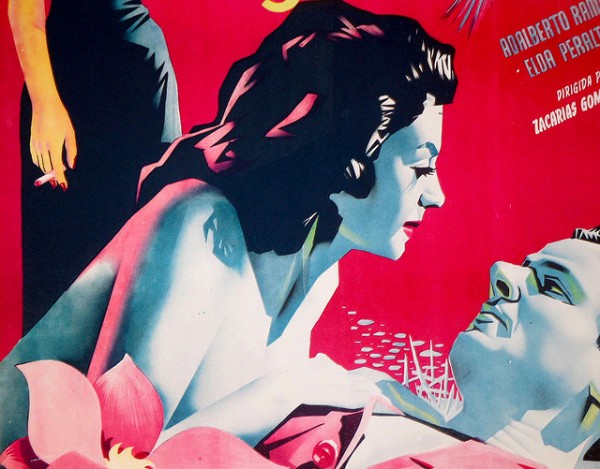
Photo courtesy: Cdsessums
Writer: Yamuna Matheswaran
As an adolescent growing up in India and facing the rude shock of eve-teasing practically overnight, it caused me many years of shame and humiliation, discomfort with my own body, apprehension every time I stepped out of the house, and also caused me to wish I were born a boy instead. The reason behind this being that, unlike some of my friends, I could never accept it as a part of life. Those men who grabbed my breasts in the bus, on the road, in a crowded store – with the kind of nonchalance that implied they had the right to do so – induced in me a deathly rage. It was not okay. My efforts to fight this and question gender roles and “boxes” as a teenager only led to my elders labelling me a trouble-maker, to the point where I started to question if I was in the wrong.
I often found myself in arguments with family members for not being “feminine” enough. My refusal to wear scented flowers in my hair, or jewellery, or that well-known “dot” – the bindi – on my forehead, did not sit well with them. I played sports, and chose to wear pants instead of the modest salwar kameez. All of these things I did not because of a desire to rebel or a disregard for my culture, but because that was who I was, as a person. Clearly, I – and other girls like myself – didn’t fit into preconceived notions of the “good Indian girl”. At times, it led me to wonder if I was in the wrong for not being a certain way. Over time, however, it became clear that it was a much larger issue related to the perception of women in Indian society, where male chauvinism is alive and well. Read more…
On all things ‘Indian’
Writer: Chirag Jain
Indians have a way of ‘Indianizing’ foreign cultural habits. As a country, we routinely adopt new cultures and social habits, but everything passes through the inevitable ‘make-it-for-India’ shower . Take for instance how we have conveniently (and quite) unapologetically ‘Indianized’ colonial tea-drinking habits to our own desi, ‘boil-to-broth’ version of tea. Another import – the ‘Nightie’, merely meant to be used as nightwear, has comfortably found space in the wardrobes of Indian women, the only difference being that it has now been ripped off its post-sunset and bedtime exclusivity, and been reinvented as the household uniform (occasionally used even while shopping at the market). It’s wonderful how competent we are at finding some use for anything that comes in, be it our classical Chettinad Pizza or even the alleged ‘Chinese’ dishes on the menu of any ‘multi-cuisine Indian restaurant’.
Photo courtesy: canned-responses.com
What is most remarkable about the Indian mindset is that we are always accommodative of new cultural habits, but at the same time have an inherent Indian way of thinking and working. In most cases, this reflects upon our own culture, and speaks of the strong value system that we’re exposed to early on. Of course, to understand where we derive these values from requires a rather complex socio-economic analysis of Indian society, and is an entirely different ballgame. But with this piece, I hope to understand – ‘why we do the things we do?’
